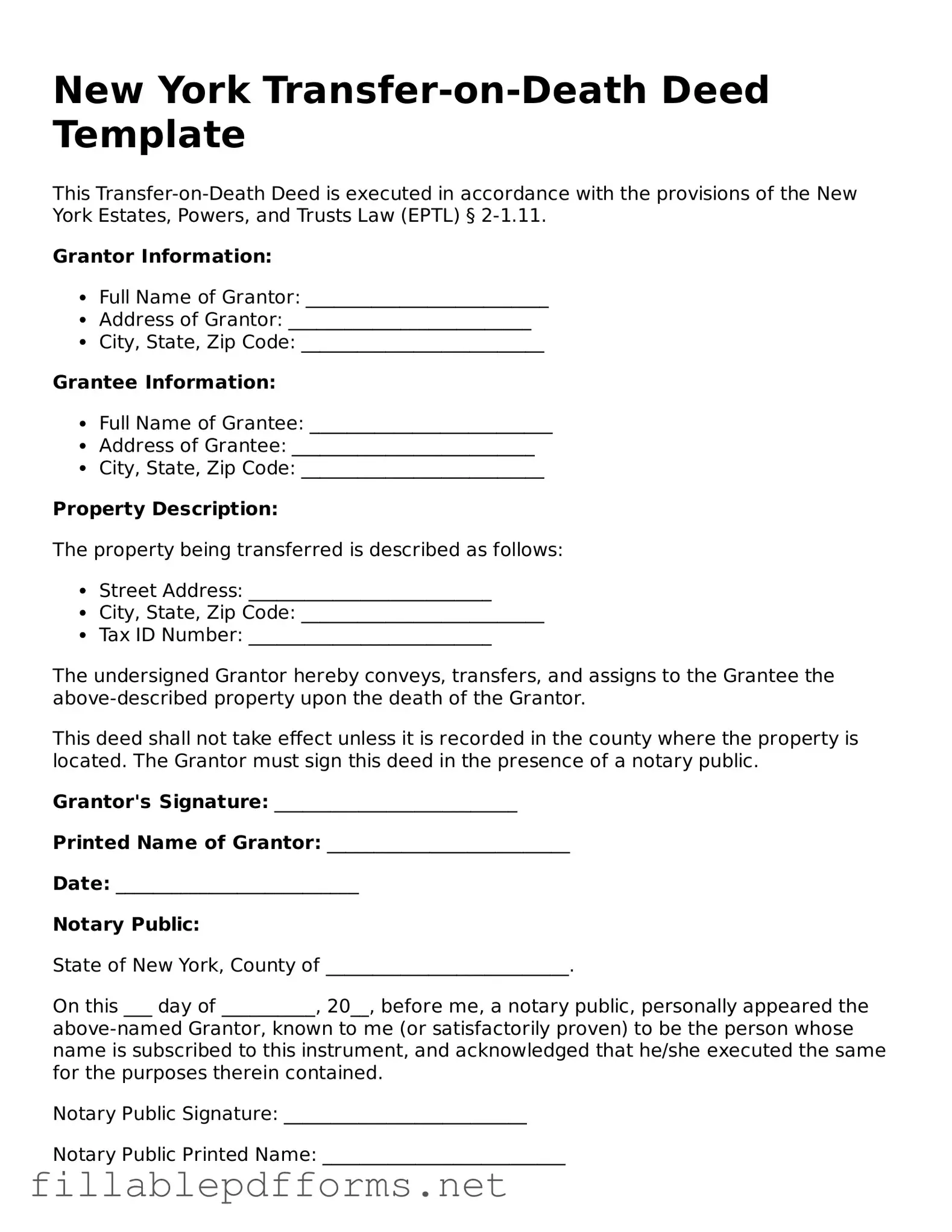Attorney-Verified Transfer-on-Death Deed Form for New York State
The New York Transfer-on-Death Deed is a legal document that allows property owners to designate beneficiaries who will receive their real estate upon their passing, without the need for probate. This form provides a straightforward method for transferring property, ensuring that your wishes are honored and your loved ones are provided for. Understanding how to properly utilize this deed can simplify the estate planning process and help avoid potential disputes among heirs.
Launch Editor Here
